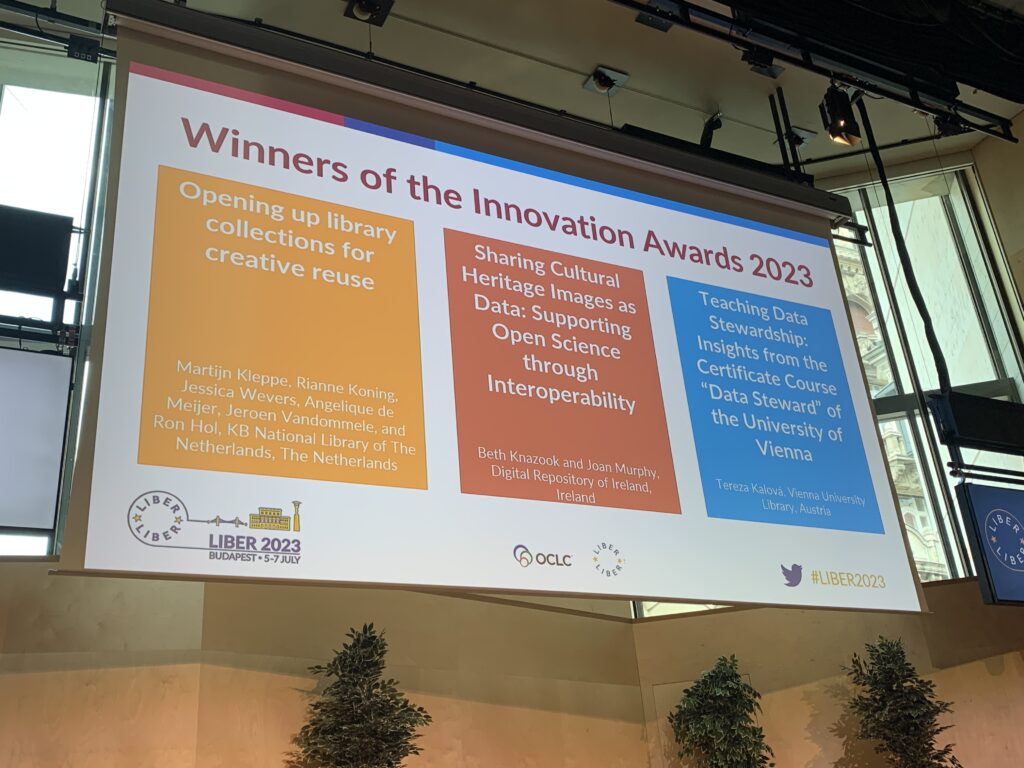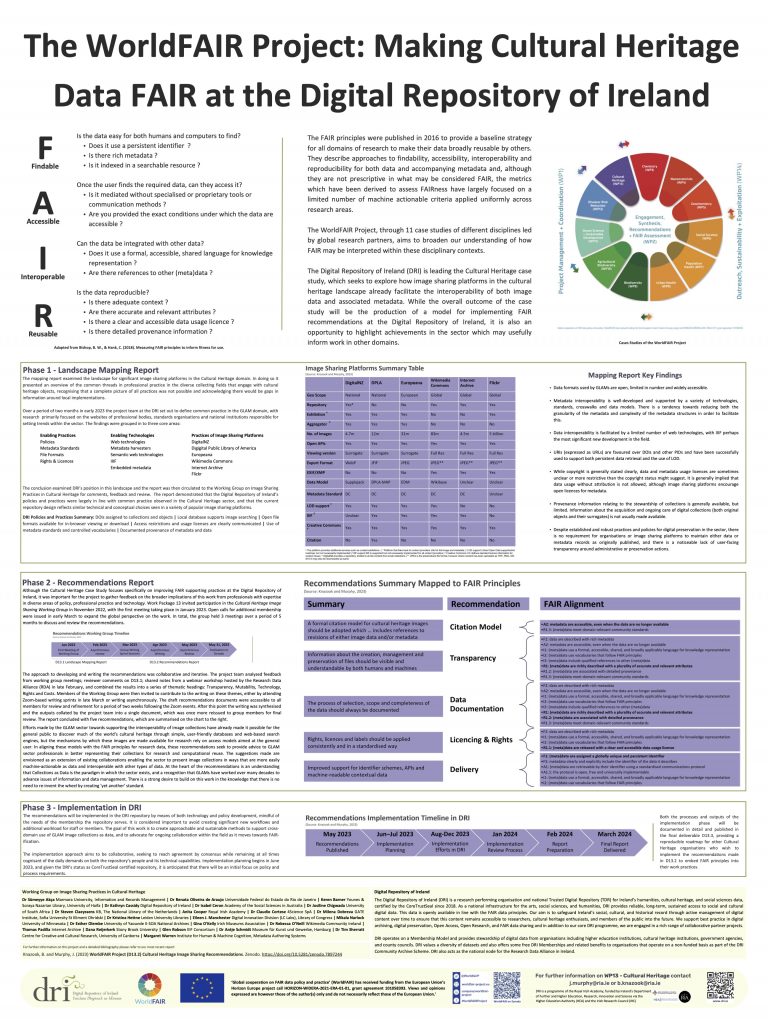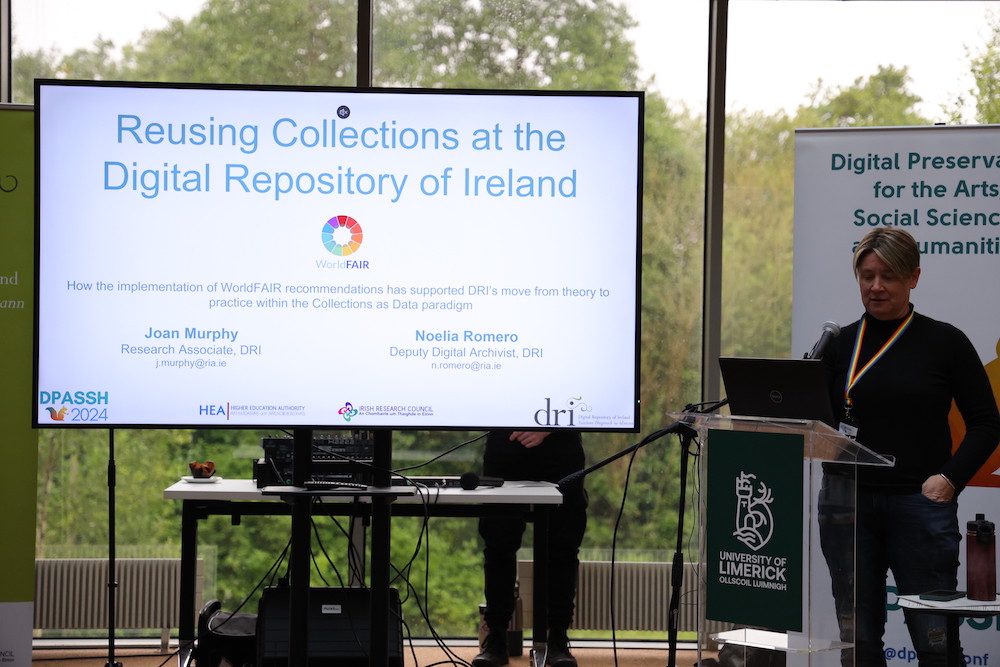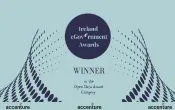This blog is part of a series of posts related to the Cultural Heritage Image Sharing Recommendations produced by the WorldFAIR Project’s Cultural Heritage Image Sharing Working Group. Learn more about DRI’s role in the WorldFAIR Project.
A wrap-up from the project team: Beth Knazook, DRI’s Research Data Project Manager and Joan Murphy, DRI Research Associate.
From June 2022 to May 2024, the Digital Repository of Ireland (DRI) was involved in an ambitious global initiative to improve the interoperability and reusability of digital research objects and data. The WorldFAIR Project presented an exciting opportunity to explore how different disciplines of practice interpret the FAIR principles for research data. These principles, which advocate that data should be Findable, Accessible, Interoperable and Reusable, have had a significant worldwide impact on all aspects of research, from the design of research infrastructures, equipment, standards, methods and publications to the way we approach equity, inclusion and acknowledgment of data practices.
The DRI led the Cultural Heritage Case Study, which focused on how Galleries, Libraries, Archives and Museums (the ‘GLAM’ sector) can build upon existing methods and tools for sharing image collections. In May 2023, we published our key deliverable, (D13.2) Cultural Heritage Image Sharing Recommendations Report, which was co-authored by a working group of professionals with expertise in diverse areas of policy, professional practice and technology. Over the next year, we worked towards making incremental improvements to Repository functionality in alignment with those recommendations and published a report in March 2024 to share our journey, (D13.3) Implementation and Testing of Cultural Heritage Image Sharing Recommendations: DRI Case Study Report. Our WorldFAIR Project page offers more detail about this report, the working group and other activities over the course of the project.



Announcement of the winners of the OCLC Award for Innovation at the LIBER annual conference 2023 / Beth and Joan at DPASSH 2024 / A poster for the DARIAH annual conference in 2023 (https://doi.org/10.5281/zenodo.7950663)
Of course, the end of the project is not the end of our FAIR-enabling work. Beth and Joan sat down to share what they think could come next for DRI.
BK: We managed to get a lot done these last 2 years! We should start by thanking colleagues across the organisation and, really, across the international cultural heritage sector. We had an amazing Working Group putting their heads together on the Cultural Heritage Image Sharing Recommendations Report, and we definitely would not have accomplished our goals without the enthusiastic help of DRI’s Junior Software Developer Murilo Dias who led the Repository development work. [More about Murilo’s work is shared in our blog post on the implementation efforts at https://dri.ie/news/worldfair-recommendations/.]
- There is a new citation style option for Cultural Heritage resources which promotes recognition of the stewarding organisation for the creation of both data resources (the digital objects) and interpretive metadata (description and documentation).
- A Creative Commons Public Domain Dedication (CC0) is now visible on all Repository metadata landing pages as part of the Metadata Statement (unless otherwise clearly indicated by the depositor).
- Depositors are now able to select from a range of Rights Statements to clarify free-text rights information.
- The Reuse Licence, selected from the range of Creative Commons licences, is visible on each object landing page.
A great outcome for me personally is the sustained interest from the Working Group we put together to develop the recommendations report. The Working Group was only meant to be a short-term discussion group, but we seem to have tapped into a hot topic at just the right time. Building on a growing international interest in developing the ethical and responsible framework needed to make cultural heritage data more accessible to big data research questions, we collaborated with Thomas Padilla (who has been leading the movement for some time now with successive projects to advance Collections as Data) to propose a continuing Research Data Alliance (RDA) Interest Group. This group has since been formally endorsed by the RDA and activities are shared via the RDA website. I see this as a great way to keep DRI engaged with the questions arising from the WorldFAIR work and I hope more people are encouraged to join!


Screenshot of session recording from the 21st RDA Plenary in Salzburg (https://youtu.be/n9dVuyNanSg?feature=shared)/ Joan Murphy presenting on “Reusing Collections at the Digital Repository of Ireland” at DPASSH 2024
JM: Our WorldFAIR work also featured prominently at the DRI’s biennial conference on Digital Preservation in the Arts, Social Sciences and Humanities (DPASSH) in June 2024 (https://dpassh.org/). Although the conference itself took place after the close of the project, a data visualisation training session that I developed along with DRI’s Deputy Digital Archivist Noelia Romero at the University of Limerick produced some eye-catching visualisations and highlighted the achievements of the D13.3 report in supporting the reusability of DRI collections. The recommendations made in D13.2 have really been fundamental to supporting reuse of DRI’s collections. In my conference lightning talk I spoke about the practical challenges of implementing the Collections as Data paradigm within the Repository which led to some fascinating discussions over coffee! [Joan’s talk and many of the other presentations from DPASSH will be available shortly on the DRI Vimeo channel: https://vimeo.com/digitalrepositoryireland.]

BK: And the data visualisations were displayed for attendees of the conference too.
JM: Indeed! We were delighted to be able to project the visualisations on the walls of the Hunt Museum prior to the keynote address by Dr Coen Wilders of the Rijksmuseum. The students used a variety of tools, including Flourish and Knight Lab’s Timeline to give us some fascinating insights into the DRI collections, using the Repository’s CC0 metadata.



Projection of data visualizations on the wall of the Hunt Museum / DRI Director Dr. Lisa Griffith welcoming the audience at the DPASSH keynote / Dr. Coen Wilders presenting the keynote address
BK: DPASSH really highlighted that we have a great support system in place for DRI to continue to explore new ideas around facilitating the interoperability of cultural heritage collections. I know we still have a few loose ends to tie up first though! For instance, we produced a survey of members’ digitisation practices that we still need to build on. We want to enhance transparency around digital workflows to help users better understand how images are made, shared and preserved, but we also don’t want to bombard users with more technical information than is useful. DRI’s Senior Software Engineer Kathryn Cassidy gave a presentation at the 2024 International Digital Curation Conference on what we learned about how institutions create images, and we’re still thinking about how we can use that in DRI’s depositor workflow to improve the cultural record.
JM: I might add that, even though we’ve successfully enhanced the machine-readability of Licences and Rights, I still think there is quite a bit of work to be done to create a mechanism for rights acknowledgement for community groups when it comes to the representation of digital cultural objects. While the focus of our work has been on the implementation of FAIR within the Repository, we are mindful of the CARE Principles and their purpose to ensure that data from Indigenous and marginalized communities is reused ethically. The Traditional Knowledge (TK) Labels developed by Local Contexts, by and for Indigenous peoples, is a great example of CARE-enabling work that has been gaining momentum in the GLAM sector and I believe something like this could add huge value to our collections going forward.
BK: I think this will definitely be developed further with time. Speaking of work-still-in-progress, do you want to talk about the work you’ve done with datasheets since the D13.3 report?
JM: Yes, although to be honest the sands are still shifting with regard to the terminology that will be used–datasheets, data envelopes, data cards….! The concept is a simple one, a living document, machine- and human-readable, that captures and contextualises collection data. While the sector has not yet coalesced behind a single proposal, much less a method of implementation, it is clear that there is a need for this contextual information, particularly as AI gains momentum. What we’ve decided to do is to trial the Europeana Datasheets template [see our guest blog post from Steven Claeyssens] to make this information more accessible. Giulia Osti gave a great workshop on Datasheets for Digital Cultural Heritage Datasets at DPASSH and I’m really looking forward to seeing how researchers and data stewards engage with this concept over the coming months.

Even though the WorldFAIR project is officially over I’ll be working on an updated summary over the summer months. I’m hoping this will serve as a practical guide to the benefits and challenges of sharing collections as data. We’ve learned so much about the practicalities of implementing FAIR through our work on the project and I think this guide will offer us a great opportunity to share the successes, as well as the challenges, that moving from theory to practise within the Collections as Data paradigm has meant for DRI.
BK: This is a good opportunity to reflect as well on how our work contributed to the overall goal of the project, which was to enhance the interoperability of data across research areas. The WorldFAIR Cross-Domain Interoperability Framework was developed concurrent with the disciplinary work in each of the case studies, so that as we learned how our areas of work could be more FAIR we also learned how the different interpretations of FAIR intersect. The resulting framework complements the existing European Open Science Cloud (EOSC) Interoperability Framework and has implications for the way that data will be fed through the new EOSC Nodes, potentially informing a complex network of data repositories and services. By continuing to think about ‘collections as data’ at DRI, we’re moving towards a much more integrated research data culture. This is definitely something exciting to be a part of!



